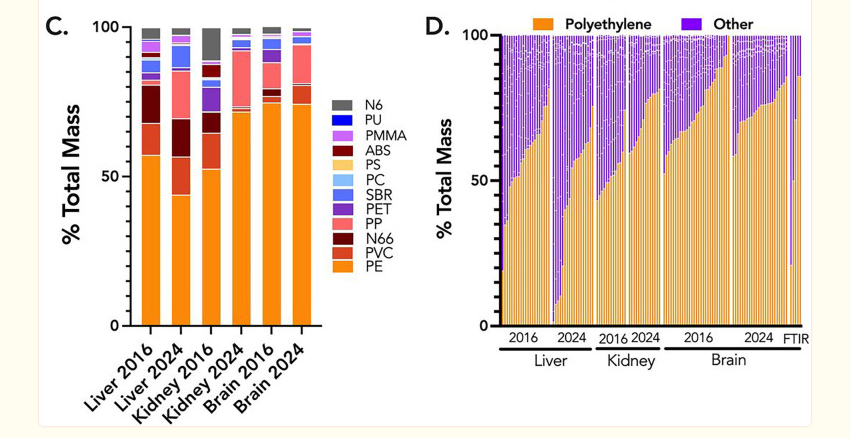Researchers have made a startling discovery: microplastics are present in human brains. A new study, found that all 91 brain samples examined contained these tiny particles. Moreover, the concentration of microplastics in the brain samples was significantly higher than in the liver and kidney samples from the same bodies.

This suggests that the human brains are a major reservoir for microplastics, making it “one of the most plastic-polluted tissues yet sampled.” The numbers are alarming. Twenty-four of the brain samples contained an average of 0.5 percent plastic by weight.
The human brain joins a growing list of body parts found to be contaminated with microplastics. Scientists have previously discovered microplastics in human testicles, penises, semen, arteries, hearts, lungs, and even bone marrow.
While the exact health implications of microplastics in the brain remain unclear, researchers have raised several concerns. Previous studies have linked microplastics to fertility issues, immune system problems, memory impairment, and even an increase in cancer among young people.

The study by Campen and his colleagues also found a potential connection between microplastics and dementia. Samples from individuals who died of dementia, including Alzheimer’s, contained significantly higher levels of microplastics.
Unfortunately, the problem is likely to worsen. The researchers observed that the concentration of microplastics in the brain samples increased over time, mirroring the rising levels of plastic pollution in the environment.
Reference- The Guardian, National Geographic, BBC, University of New Mexico study, National Library Of Medicine






